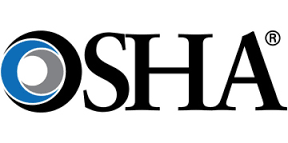Electronic Reporting to OSHA for Utilities and Construction

The new requirements from the Occupational Safety and Health Administration (OSHA) just keep coming. A few months ago, it was the silica final rule. Now the agency says companies will have to send injury and illness reports which they already prepare to the agency in electronic form. The rule has different requirements depending on size of the company. Businesses with 250 or more employees must send their Forms 300, 300A and 301 to OSHA or OSHA’s designee on an annual basis. Smaller companies with 20 or more employees but fewer than 250, in certain designated industries, will have to electronically submit information from their Form 300A. Those designated industries include utilities and construction.
There will apparently be two options for reporting. One would be an OSHA developed web-based reporting system where companies go online and fill out forms. The other would be companies using the same web portal but transmitting forms they have already prepared with their own software. The initial reporting deadline is January 1, 2017, so there is a lot to be done to clarify these data reporting issues in the next few months.
For example, the system could allow employers to securely transfer encrypted data over the web in an acceptable data file format (e.g.,MS Excel, XML, or csv) for validation and import into the electronic reporting system. The OSHA will provide users with easy-to-follow guidance that addresses required data elements, format and other technical considerations, and steps involved in validation, transfer and confirmation. It is not clear how soon that guidance will be available
OSHA estimates that this final rule will have economic costs of $15 million per year, including $13.7 million per year to the private sector, with costs of $7.2 million per year for electronic submission for affected establishments with 250 or more employees and $4.6 million for electronic submission for affected establishments with 20 to 249 employees in designated industries. With respect to the anti-discrimination requirements of this final rule, OSHA estimates a first-year cost of $8.0 million and annualized costs of $0.9 million per year.
Those anti-discrimination requirements relate to three new mandates: 1) requiring employers to provide certain information on injury and illness reporting regarding employees, 2) clarifying that employer reporting procedures must be reasonable, and 3) prohibiting employers from retaliating against employees for reporting work-related injuries and illnesses.
Related News
Related News

- Keystone Oil Pipeline Resumes Operations After Temporary Shutdown
- Freeport LNG Plant Runs Near Zero Consumption for Fifth Day
- Biden Administration Buys Oil for Emergency Reserve Above Target Price
- Mexico Seizes Air Liquide's Hydrogen Plant at Pemex Refinery
- Enbridge to Invest $500 Million in Pipeline Assets, Including Expansion of 850-Mile Gray Oak Pipeline
- Enbridge Receives Approval to Begin Service on Louisiana Venice Gas Pipeline Project
- U.S. to Acquire 3 Million Barrels of Oil for Emergency Reserve in September
- AG&P LNG Acquires 49% Stake in Vietnam's Cai Mep LNG Terminal
- BP's Carbon Emissions Increase in 2023, Ending Decline Since 2019
- Texas Sues EPA Over Methane Emission Rules for Oil and Gas Sector




Comments